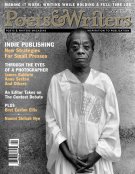At no time on my book tour did I jump up and down, wave my fists, and scream, “It’s a novel! That means fiction!”
For some readers, identifying real-life precedents becomes a sport. And they will unearth connections you weren’t even aware of.
At least I don’t think I did.
It’s hard to be sure, because, in my head, I had that tantrum about three times daily as I traveled from town to town in southern Michigan, reading, signing books, and attending the Ann Arbor Book Festival. You see, my novel, Flight, was set in that region, where I had lived during my high school and college years.
Full disclosure: The connections don’t end there. Flight is the story of an aging commercial pilot and his family as they face down their demons in the aftermath of 9/11, trying to find a way to move forward in an uncertain world. Like many first-time novelists, I wrote close to home. “Write what you know,” goes the conventional wisdom. I did. My fictional family, the Gruens, comprises parents and two daughters, as did the one I grew up in. The father, Will, is a TWA pilot, as my father was for thirty-five years. The mother, Carol, puts her own dreams on hold to do the best she can as a wife and mother, a choice my own mother made at times. And the elder daughter, Margaret, is a bossy overachiever who leaves her small Michigan town with a head full of lofty ambitions. Ahem.
There are differences, though. The Gruens live in one place for most of the daughters’ childhoods; my family moved incessantly. Will is an ex–Air Force officer and Vietnam veteran; my father was in the Air National Guard and never saw active service. Carol lacks my mother’s wacky sense of fun, Margaret’s bossiness is far more effective than my own, and, as for the younger daughter, she’s nothing like my sister. And the plot of the story—the family gathers for a wedding that may or may not happen—is completely contrived. My younger sister did get married. But the similarities end there.
As I traveled and talked to people, I found myself wanting to point out these differences. No one was having it.
“So your novel is about your father,” one bookstore manager told me. “Well, no,” I explained, “Will is a fictional character who shares some traits with my father.”
“C’mon, Ginger,” he chided. “We all read the newspaper article.” The local newspaper had run a feature pointing out some of the similarities between Flight and my life, and that was what people wanted to hear about. I began to sense a creeping frustration. Why were people so interested in the reality behind the fiction? Why weren’t they paying more attention to the craft of what I had done?
If you write memoir, your material—by which I mean recognizable features of your own life—is the core of your work. But even if you write fiction, you’re likely to find yourself borrowing details, character traits, even whole stories from the real world. And when you do, you open up a can of worms; wriggly little facts start crawling all over your art. For some readers, identifying real-life precedents becomes a sport. And they will unearth connections you weren’t even aware of.
“You said that about your sister once,” my mother pointed out about a line in which I described my younger-sister character, Leanne, as eager to avoid confrontation. Well, yes, I guess I did. But many people avoid confrontation. My partner, Bob, is another. But that doesn’t make Leanne a portrait of my sister, Heidi, any more than she is a portrait of Bob, though I have observed both of them at times and learned things about that shared trait. Why is this so hard to make clear?
I know what you’re thinking: Get over it. And perhaps you’re right. Why should it bother me? I’m sure there are writers who use their life material without a second thought. But in every well-known case of a writer reticent about sharing personal details, or refusing to identify real-life models for characters, I get a whiff of what was then irking me. Don’t focus on me; focus on my work.
All writing, even memoir, is an act of imagination, a labor to make something new—not the aiming of a video camera. Every time someone zeroed in on a true-life correlative—real or imagined—a little voice inside my head whined: “But what about my creative effort? What about the art involved?”
Oh, for the glory days of the New Criticism, when John Crowe Ransom and Alan Tate declared the author irrelevant! A work of art, they proclaimed, had nothing to do with the outside world, no matter how many connections you think you see. It was complete and unified in itself, and the only relevant critical parameters were questions of its own internal consistency. Did Tennessee Williams have an invalid sister? Who cared! All that mattered was that The Glass Menagerie be a complete and powerful composition on its own terms. Williams could throw himself in the ocean for all the New Critics cared, and take his sister with him. Fantastic, to be that uninteresting!
“I’m nobody! Who are you?” Emily Dickinson nailed it when she envisioned herself as an absence. The sense of joy and freedom in that poem rings true to writers. We’re writers, after all, not actors. Many of us are introverts. While I don’t consider myself a social klutz, I am subject to attacks of extreme shyness, and, even in comfortable situations, I tend to be an observer, never quite losing myself in the moment for fear of missing something. All that observing energy, that quiet analysis, goes into what I write. So when push comes to shove, I think my writing is more interesting than I am. At least I hope it is.








